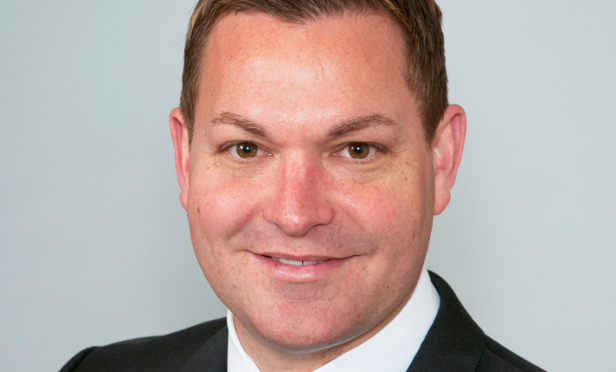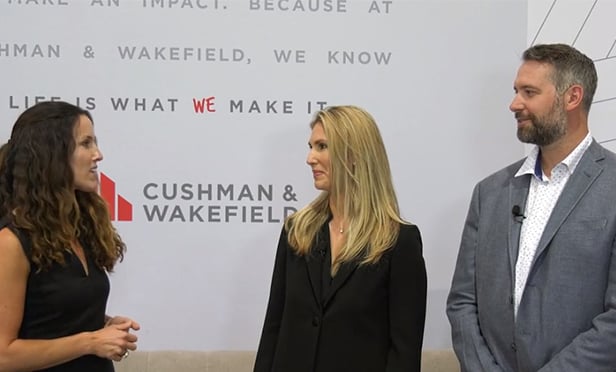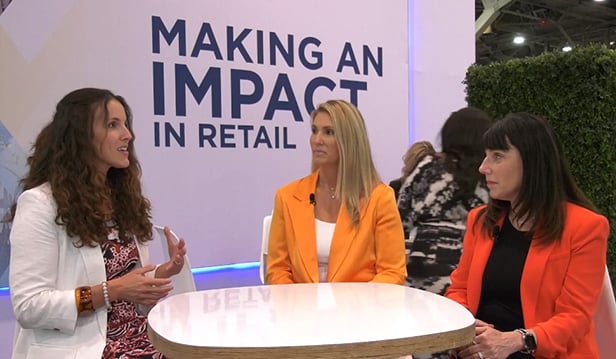
CARLSBAD, CA—Carlsbad has been the most actively traded market in San Diego County, and it's seeing increased activity in the life-science/biotech/R&D sector despite nearby Torrey Pines Mesa and UTC, Cushman & Wakefield's senior managing director Aric Starck tells GlobeSt.com. Starck and Rick Reeder of C&W's Capital Markets Group Cushman & Wakefield recently represented both parties in the sale of Faraday Research Center in Carlsbad from Alvarez & Marsal Capital Real Estate LLC to an unnamed Los Angeles-based investor for $19 million. The 65,840-square-foot, single-story, class-A, biotechnology/creative-office building at 2251 Faraday Dr. is fully leased to Abbott Laboratories and Wasserman Media Group. The property is part of a larger, prestigious master-planned development known as the Carlsbad Research Center and is situated amongst a premier cluster of life-science companies.
We spoke exclusively with Starck about the deal and about Carlsbad as a biotech/life-science market and how it compares to nearby life-science submarkets.
GlobeSt.com: Why are biotech/life-science companies attracted to Carlsbad?
Starck: A lot of people don't realize that San Diego is the third largest biotech cluster in the US, and a lot of that is consolidated in the Torrey Pines/Sorrento area, which is ground zero because of its proximity to the research institutes and colleges. But that market is also very expensive. The Carlsbad market is 20-million-square-foot market, and depending on whether you use our numbers, a competitor's or CoStar's, the inventory breaks down to 14 million square feet of industrial, with half of that (7 million square feet) being R&D, and 3 million square feet being life science. This includes big names like Thermo Fisher. One of the largest life-sciences transaction in San Diego was when they bought out Life Technologies 18 months ago or so. We've also got Beckman Coulter and Genoptix in Carlsbad, and we've got a lot of the major spine companies like Spinal Elements and Alphatec Spine and a lot of the medical-device companies.
Why are they here? It's twofold. Some companies are doing R&D, and some are doing manufacturing, and you've got a balance of highly skilled and educated workers you can pull from in Carlsbad, Del Mar and Encinitas, plus executives from Del Mar, Encinitas and Fairbanks Ranch—there are some very affluent areas nearby. There's also a skilled labor pool from San Marcos for manufacturing. Some people call Carlsbad the Titanium Triangle because of all the medical-device and action-sports companies here. Carlsbad is also known as the golf capital of the world because there are 30 major golf companies here including Titleist, Callaway and Puma. It's the next pocket for R&D or industrial up to the 805 merge, so it's truly a reverse commute.
GlobeSt.com: How does this market compare to life-science hubs in UTC and the Torrey Pines Mesa?
Starck: Obviously, it's smaller in square footage. Rents are at a discount, and it wins with the reverse traffic patterns and proximity to decision-maker housing—the commute to work is a big thing. I also think that Carlsbad is very much of an incubator market as well. There's a lot of organic growth—companies that started with an idea or invention and then brought on VC money. A lot of the life-science growth has been organic, and it's a shift from the last cycle where you had golf companies go overseas. This opened up space, and high-tech companies came in. The market itself has been very steady. There's been good net absorption, and R&D/life science is at sub-6% vacancy in Carlsbad.
GlobeSt.com: Do you anticipate more deals like Faraday Research Center to take place in this market?
Starck: We do. Carlsbad is still considered a value just because assets trade below replacement cost, and it's still seen from an investor standpoint as a value-creation market. The fundamentals are good, vacancy is declining and rents are increasing. Carlsbad has been the most actively traded market in San Diego County.

CARLSBAD, CA—Carlsbad has been the most actively traded market in San Diego County, and it's seeing increased activity in the life-science/biotech/R&D sector despite nearby Torrey Pines Mesa and UTC, Cushman & Wakefield's senior managing director Aric Starck tells GlobeSt.com. Starck and Rick Reeder of C&W's Capital Markets Group Cushman & Wakefield recently represented both parties in the sale of Faraday Research Center in Carlsbad from
We spoke exclusively with Starck about the deal and about Carlsbad as a biotech/life-science market and how it compares to nearby life-science submarkets.
GlobeSt.com: Why are biotech/life-science companies attracted to Carlsbad?
Starck: A lot of people don't realize that San Diego is the third largest biotech cluster in the US, and a lot of that is consolidated in the Torrey Pines/Sorrento area, which is ground zero because of its proximity to the research institutes and colleges. But that market is also very expensive. The Carlsbad market is 20-million-square-foot market, and depending on whether you use our numbers, a competitor's or CoStar's, the inventory breaks down to 14 million square feet of industrial, with half of that (7 million square feet) being R&D, and 3 million square feet being life science. This includes big names like Thermo Fisher. One of the largest life-sciences transaction in San Diego was when they bought out Life Technologies 18 months ago or so. We've also got
Why are they here? It's twofold. Some companies are doing R&D, and some are doing manufacturing, and you've got a balance of highly skilled and educated workers you can pull from in Carlsbad, Del Mar and Encinitas, plus executives from Del Mar, Encinitas and Fairbanks Ranch—there are some very affluent areas nearby. There's also a skilled labor pool from San Marcos for manufacturing. Some people call Carlsbad the Titanium Triangle because of all the medical-device and action-sports companies here. Carlsbad is also known as the golf capital of the world because there are 30 major golf companies here including Titleist, Callaway and Puma. It's the next pocket for R&D or industrial up to the 805 merge, so it's truly a reverse commute.
GlobeSt.com: How does this market compare to life-science hubs in UTC and the Torrey Pines Mesa?
Starck: Obviously, it's smaller in square footage. Rents are at a discount, and it wins with the reverse traffic patterns and proximity to decision-maker housing—the commute to work is a big thing. I also think that Carlsbad is very much of an incubator market as well. There's a lot of organic growth—companies that started with an idea or invention and then brought on VC money. A lot of the life-science growth has been organic, and it's a shift from the last cycle where you had golf companies go overseas. This opened up space, and high-tech companies came in. The market itself has been very steady. There's been good net absorption, and R&D/life science is at sub-6% vacancy in Carlsbad.
GlobeSt.com: Do you anticipate more deals like Faraday Research Center to take place in this market?
Starck: We do. Carlsbad is still considered a value just because assets trade below replacement cost, and it's still seen from an investor standpoint as a value-creation market. The fundamentals are good, vacancy is declining and rents are increasing. Carlsbad has been the most actively traded market in San Diego County.
Want to continue reading?
Become a Free ALM Digital Reader.
Once you are an ALM Digital Member, you’ll receive:
- Breaking commercial real estate news and analysis, on-site and via our newsletters and custom alerts
- Educational webcasts, white papers, and ebooks from industry thought leaders
- Critical coverage of the property casualty insurance and financial advisory markets on our other ALM sites, PropertyCasualty360 and ThinkAdvisor
Already have an account? Sign In Now
*May exclude premium content© 2025 ALM Global, LLC, All Rights Reserved. Request academic re-use from www.copyright.com. All other uses, submit a request to [email protected]. For more information visit Asset & Logo Licensing.








